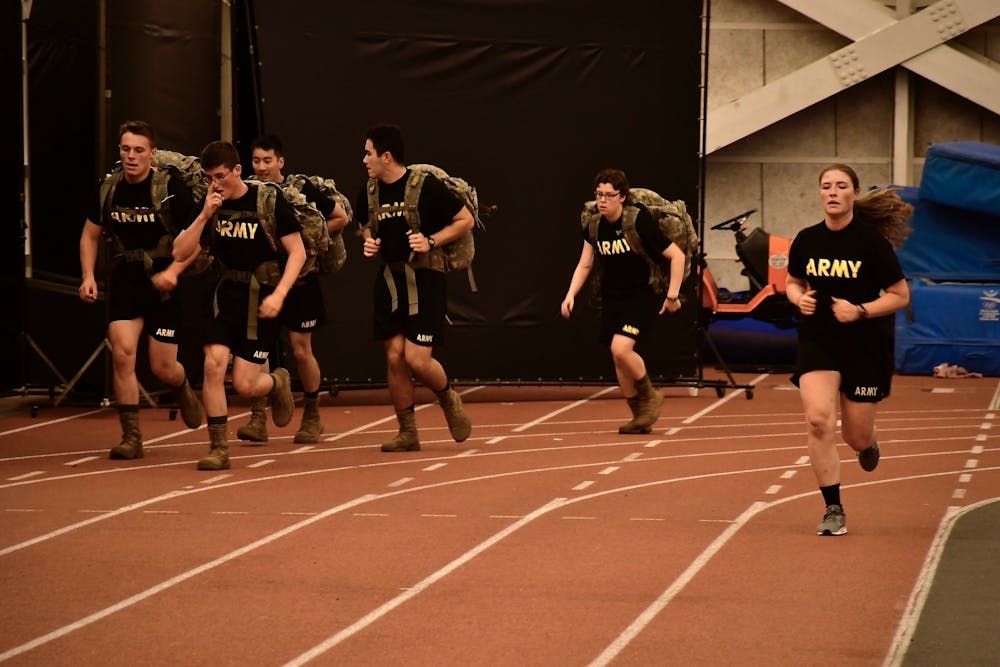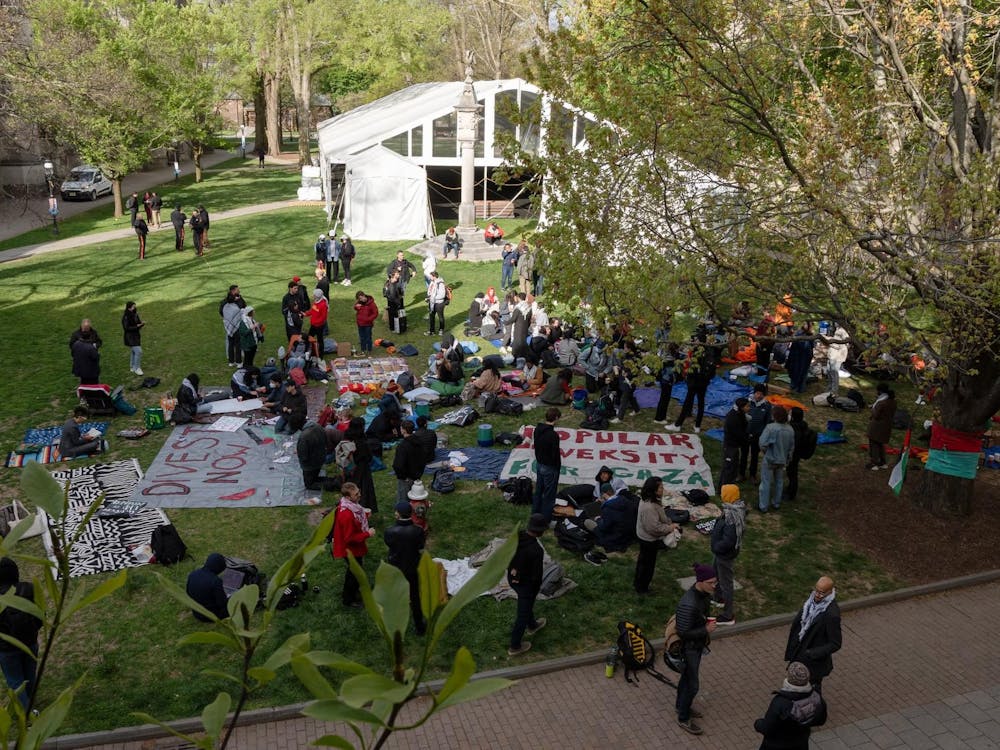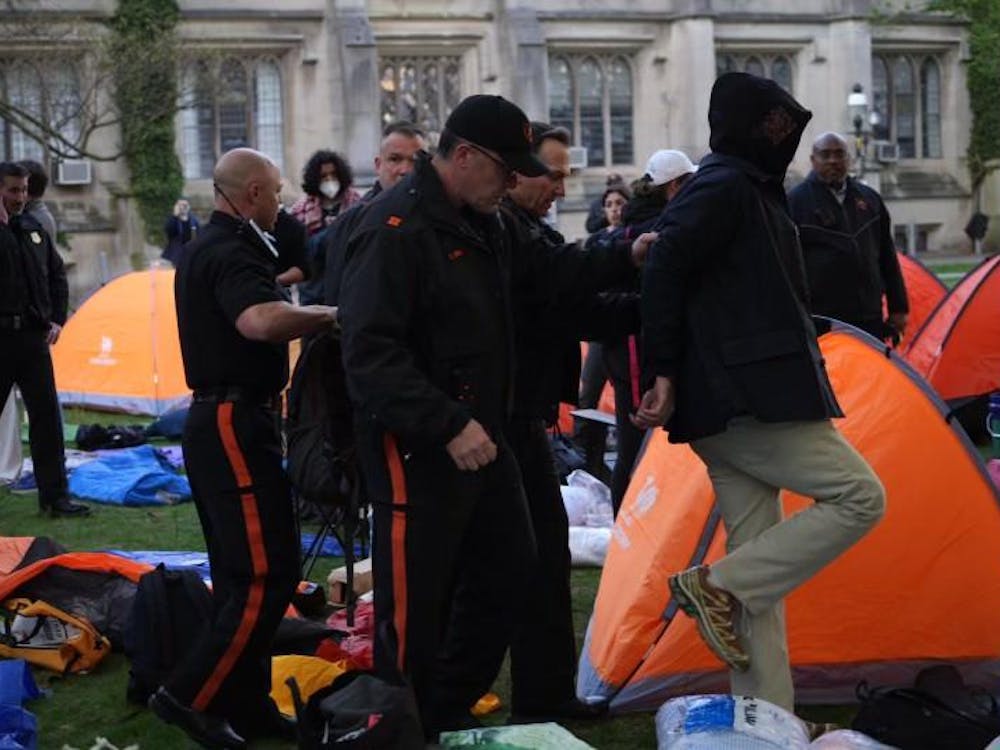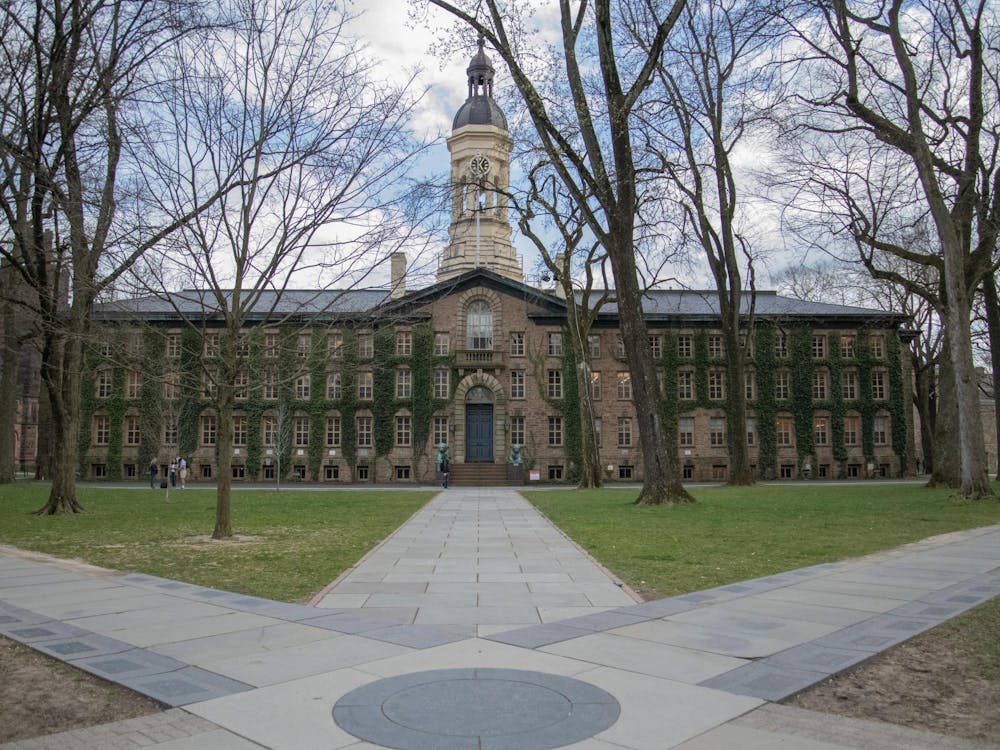Three days a week, Cadet Gabriel Peña ’23 wakes up at 5:30 a.m. and makes the mile trip to Jadwin Gymnasium for physical training (PT). By 8:00, he’s in the dining hall for breakfast and then on his way to a 9:00 a.m. class. Peña’s schedule is roughly similar to that of the 47 other cadets in Princeton’s Army ROTC.
“I’m awake probably three hours before the rest of my roommates,” Peña said. “As tiring as it is, I don’t mind getting up early. Me losing a couple hours of sleep if it means saving someone’s life in a matter of years? There’s no comparison.”
This year marks the 100th anniversary of Army ROTC at Princeton. Since its inception in 1919, the program has expanded to include cadets from The College of New Jersey, Rider University, and Rowan University. The program boasts Mark A. Milley ’80 — 20th Chairman of the Joint Chiefs of Staff, the highest ranking officer in the United States military — as an alumnus.
“It's an honor to be a part of the ROTC program on its 100th year at Princeton and an honor to serve as the cadet company commander this year,” Cadet Captain Caleb Visser ’20, Cadet Company Commander of the Tiger Company, wrote in an email to The Daily Princetonian. “We understand that we all stand on the shoulders of the giants who have come before us. Our experiences would not be possible without the committed paths they've paved and sacrifices they've made to steward this program over the years.”
Waxing and Waning
Kara Dowling ’20 and Leo Li ’20 recently put together a history of the University’s Army ROTC program, entitled “A Century of Service.” It marks the evolution of the Army ROTC from its founding after World War I, as one of the War Department’s first permanent peacetime ROTC units, to the present.
“At various points throughout the last century, the program has waxed and [waned] in and out of jeopardy. But at each junction, our community has come together to recognize the unique and powerful role Princeton can play in training and educating the next generation of military leaders,” Visser wrote.
One of these wanings that Dowling and Li illustrate is outlined in a chapter they call “Fall from Grace.” According to Dowling and Li, ROTC went under “massive scrutiny” beginning in 1968, with then University president Robert F. Goheen creating a special committee to examine whether or not the program should be maintained, ultimately settling on a “yes,” but under particular conditions.
Soon after, in 1970, following controversy and student protests surrounding the U.S. bombing in Cambodia and North Vietnam, two University students and two other students were arrested for arson after setting fire to Princeton’s armory; then, the CPUC voted to remove ROTC from campus.
“Army and Air Force ROTC, told to leave campus by 1972, elected to leave campus by the spring of 1971,” Dowling and Li wrote. “Navy, meanwhile, would plan to leave in 1972.”
In an effort to combat the removal, however, according to Dowling and Li, the student body passed a series of referenda recommending the return of ROTC on campus as a non-credit, “extracurricular activity,” and an agreement was reached where the Army ROTC could continue to train students. Navy and Air Force ROTC Programs left campus after the graduation of the Class of 1972.
In addition, Dowling and Li wrote that in the ’90s, the ROTC “was once again back in the spotlight,” as students began to question ROTC’s existence on campus in protest of the military’s ban on members of the LGBT+ community serving in the armed forces.

“After the Clinton Administration passed its ‘Don’t Ask, Don’t Tell’ policy in 1994, faculty began to advocate again for the removal of ROTC,” Dowling and Li wrote. “Led by Professor Steven Greene, the resolution threatened to remove ROTC, which then boasted around seventy-five cadets, from Princeton by June 30, 1994 unless the federal government reversed itself on its policy towards LGBT+ service members.”
Ultimately, the University faculty voted 42–33 to remove ROTC from campus, but the Board of Trustees voted not to accept the faculty resolution.
Under the leadership of President Christopher L. Eisgruber ’83, the Princeton NROTC Unit was re-established in 2014 as a cross-town affiliate of the Rutgers NROTC program, which had been established in 2012. The Air Force ROTC program also trains at the Rutgers campus.
The Army ROTC continues to train on the University’s campus to this day.
ROTC Today
In addition to the course requirements for their major, cadets undergo a collection of additional training that will allow them to commission as an officer in the military after graduation.
The cadets’ training includes three days of PT a week; leadership labs that teach skills like land navigation, squad situational training exercises, and individual movement techniques; field training exercises where cadets apply critical skills learned through the leadership labs; and military science courses that focus on personal, tactical, and team leadership.
Peña doesn’t mind the added work, saying, “I’m working for something bigger than myself. After I graduate, I’m gonna commission as an officer in the Army. We often get told in a lot of our labs that we need to pay attention and focus on what we are doing, because if we don’t, we could get people killed.”
Outside of the mandatory training, the cadets have the opportunity to participate in the Ranger Challenge, an activity in which cadets can gain additional skills and practice the ones they’ve learned in class. Each October, the team competes against other schools in the Ranger Challenge Competition.
“We expect a lot of our cadets — from ourselves and from one another,” Visser wrote in an email to the ‘Prince.’ “But at the end of the day, we are one team, and we have one fight. And the only way we work toward completing it is together.”
It was through Visser’s experiences in the Senegal Bridge Year Program that he began to consider pursuing a military focused path.
“I began to think about grassroots social change and community-led development. I felt a duty to work within my community and give back. I suppose it was a sense of duty in that purest sense that drove me to join the ROTC program,” Visser wrote.
The command philosophy says that the primary mission of the University’s Army ROTC is to train, develop, and empower “Cadets to lead ‘in the nation’s service and in the service of humanity’ and to embody the Scholar, Athlete, Leader model.”
“As Princeton students and U.S. Army cadets, we are committed to embodying the Army values (leadership, duty, respect, selfless service, honor, integrity, personal courage) and understanding our role as global officers,” Visser wrote.









